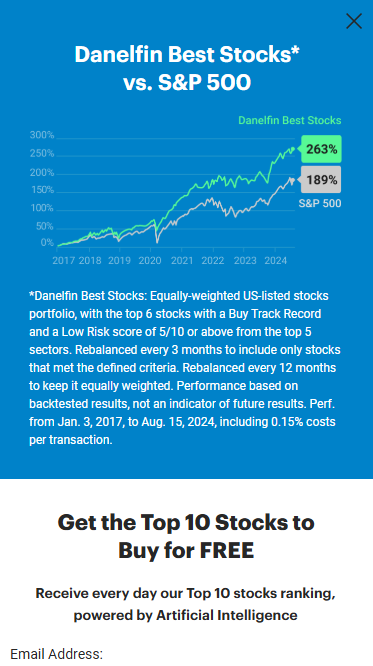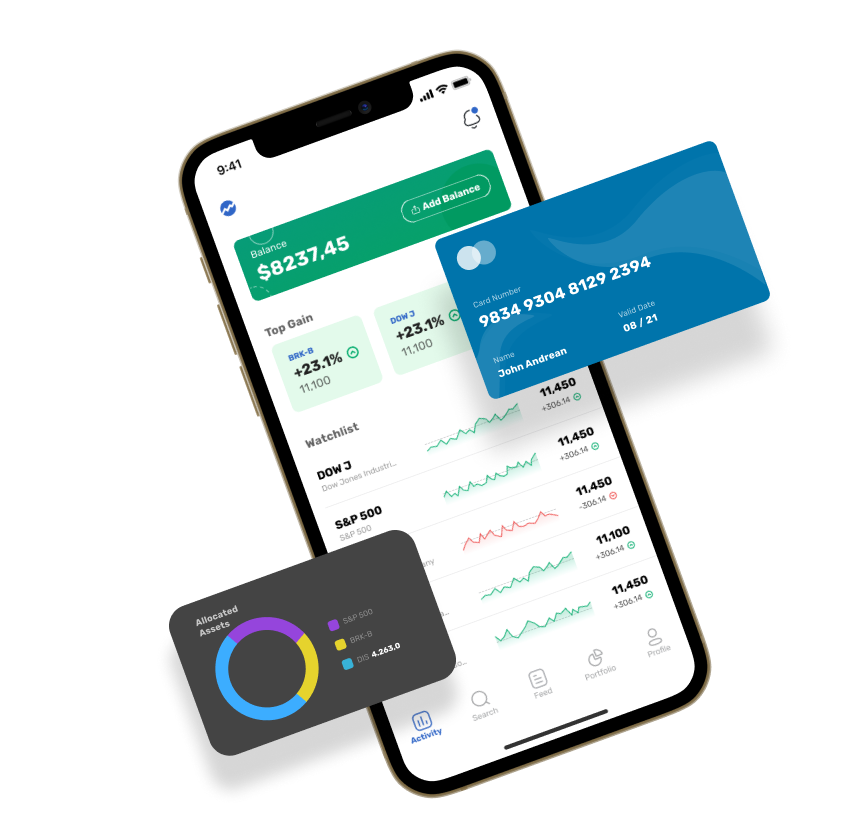The market coverage of trading platforms that use AI stock prediction/analysis is critical because it defines the assets and markets that you are able to access. Market coverage is essential because it permits you to diversify your portfolio, learn about global markets, and adapt different trading strategies. These are the top ten tips to assess the market cover of these platforms.
1. Evaluate Supported Asset Classes
Stocks - Make sure the platform you choose to use can cover major markets for stocks (e.g. NYSE NASDAQ LSE HKEX) in addition to includes mid-caps, small-caps and large-caps.
ETFs - Check to see the platform you use supports the wide range of ETFs offering exposure to a variety of diverse regions, sectors or themes.
Options and Futures: Check whether the platform allows derivatives like options or futures, as well as other leveraged products.
Forex and commodities. Find out if the platform has forex pairs as well as base and precious metals, energy products and agricultural commodities.
Cryptocurrencies: Find out if the platform supports major cryptocurrencies (e.g., Bitcoin, Ethereum) and altcoins.
2. Check geographic coverage
Global markets: Ensure the platform covers major global markets, which include North America, Europe, Asia-Pacific, and emerging markets.
Regional focus Ensure that the platform has a focus on certain markets or regions that are in line with your interest in trading.
Local exchanges. Check whether the platform allows exchanges local or regional to your location.
3. Compare Real-Time against. Delayed Data
Real-time information - Make sure the platform provides live market data that can help you make timely decisions, particularly for traders who are active.
The data is delayed. Check if the delayed data is available for free or at a lower cost, which may suffice for long-term investors.
Data latency: Make sure the platform is able to reduce the latency of real-time feeds. This is especially important for traders with high frequency.
4. Evaluate Historical Data Availability
The depth of historical data Check that the platform has a large amount of historical data that can be used for backtesting as well as analysis and testing (e.g. 10plus years).
Check for granularity. Historical data could include intraday, daily and weekly the granularity.
Corporate actions - Verify previous data to confirm that it covers stock splits, dividends, in addition to other corporate activities.
5. Check market depths and order books
Level 2 data: Make sure that your platform is equipped with Level 2 data to aid in price discovery and improved execution.
Check for real-time bidding and spreads of asking. This will help ensure that the pricing is correct.
Volume data: Ensure that the platform offers specific volume data that can be used to study market liquidity.
6. Review the coverage to determine Indices and Sectors
Major indices: Check that the platform contains the most important benchmarking indices that are used for index-based strategies, as well as other purposes (e.g. S&P 500, NASDAQ 100, FTSE 100).
Sector-specific data to provide targeted analysis, make sure the platform has data on a particular industry (e.g. technology, healthcare, or energy).
Custom indices. Find out if the platform allows you to create and track custom indexes on the criteria you specify.
7. Evaluation of the integration with News and Sentiment data
News feeds: Ensure that the platform is able to integrate real-time news feeds from reputable sources (e.g., Bloomberg, Reuters) to track market-moving events.
Check the platform's sentiment analysis tool using information from social media, news or any other source.
Event-driven Strategies: Verify whether the platform supports strategies that are triggered by events (e.g. economic reports or earnings announcements).
8. Check for Multi-Market Trading Capabilities
Cross-market trading: Make sure that the platform supports trading across asset and market categories using a common interface.
Currency conversion: Confirm that the platform supports multicurrency accounts and currency conversions for international trading.
Support for various time zones: Make sure the platform supports trading globally on markets across different time zones.
9. Examine the coverage of alternative data Sources
Find alternative sources of data.
ESG Data Look to determine whether there is any environmental, social or governance (ESG data) included in the platform for investing socially responsible.
Macroeconomics data: for a more an analysis of fundamentals, make sure the platform is stocked with macroeconomic indicators, such as GDP (gross domestic product), inflation rates and interest rate.
Review Market Reputation and User Feedback
User reviews: Study reviews from users to assess the market coverage of the platform and its reliability.
Reputation of the industry: Find out whether there are prizes or experts who acknowledge the platform for its broad coverage of markets.
Look for testimonials that demonstrate the effectiveness of the platform in particular markets and asset classes.
Bonus Tips
Trial period - You can use the demo or trial for free to test the market coverage and data coverage.
API access - Check if the API is able to access data on the market programmatically.
Customer support: Ensure the platform is able to assist you with market-related questions or data-related issues.
If you follow these guidelines to evaluate the market coverage of AI trading platforms that predict or analyze stocks, ensuring you choose one that has access to the market and the information necessary to be successful in trading. Market coverage is essential to diversify portfolios, find new opportunities and adapt to changing market conditions. Read the top trading ai tips for more advice including ai for trading, ai stock market, incite, ai stock trading app, ai stock, ai stock picker, ai investment app, best ai trading software, ai chart analysis, best ai stock trading bot free and more.

Top 10 Suggestions For Evaluating The Scalability And Accuracy Of Stock Trading Platforms Based On Ai
Analyzing the scalability of AI-driven trading and stock prediction platforms is crucial for ensuring they are able to handle growing volume of data, demands from users and market complexity. Here are the top 10 tips to assess scalability:
1. Evaluate Data Handling Capacity
Tips: Make sure that the platform you are using is able to process and analyze massive databases.
Why? Scalable systems have to handle the volume of data that is growing without performance degradation.
2. Test the capabilities of a Real-Time Processor
Check out how well your platform can handle real-time streams of data including live stock quotes, or breaking news.
The reason: The immediate analysis of trading decisions is crucial because delays could lead to you missing out on opportunities.
3. Make sure to check Cloud Infrastructure for Elasticity
Tip. Determine whether the platform uses cloud-based infrastructure like AWS, Google Cloud and Azure which are able to scale resources on demand.
Why? Cloud platforms are elastic and are able to be scaled up and down in response to the demand.
4. Algorithm Efficiency
Tip 1: Evaluate the computational efficiency for the AI models that are being utilized (e.g. reinforcement learning, deep learning).
What is the reason? Complex algorithms may require a lot of resources. Optimizing them to make them scalable is important.
5. Learn about Parallel Processing and Distributed Computer Systems.
Make sure the platform is using distributed computing or parallel computing frameworks.
Why: These new technologies provide faster data analysis and processing on multiple nodes.
Review API Integration, and Interoperability
TIP: Examine the platform's integration with external APIs.
Why: Seamless platform integration allows it to adapt to new data sources or trading environment.
7. Analyze User Load Handling
Tip: Simulate large user traffic to test how the platform does under high load.
Why should scalable platforms offer the same level of performance regardless of how many users there are.
8. Examine the Model Retraining and Adaptability
Tips Check how often the AI models can be retrained on new data.
The reason is that markets are always changing, and models have to adapt quickly in order to remain accurate.
9. Examine for fault tolerance and Redundancy
Tip - Make sure that your platform is equipped with failover and redundancy mechanisms for handling hardware or other software issues.
Why? Downtime in trading can be expensive, and fault tolerance is crucial for scalability.
10. Monitor Cost Efficiency
Tip: Consider the cost of scaling your platform. Be aware of cloud resources such as storage of data as well as computing power.
It's crucial to keep a balanced equilibrium between the expenses and performance costs.
Bonus Tip: Future-Proofing
Assuring that the platform will be able to accommodate emerging technologies (e.g. advanced NLP quantum computing, quantum computing) as well as regulatory changes.
By focusing your focus on these factors and focusing on these factors, you can evaluate the capacity of AI prediction as well as trading platforms. This will ensure that they are robust and efficient as well as prepared for growth. Follow the top rated inciteai.com AI stock app for blog tips including ai copyright signals, ai options trading, stocks ai, how to use ai for copyright trading, ai trading tool, ai trading tool, best ai penny stocks, ai stock trader, investing with ai, ai copyright signals and more.
